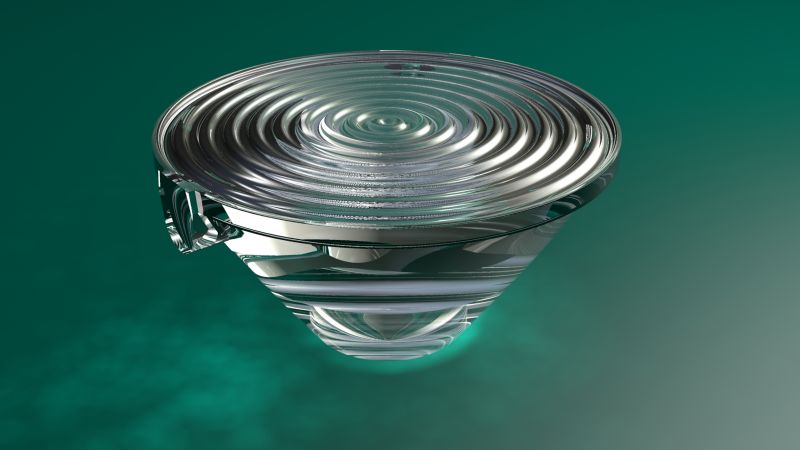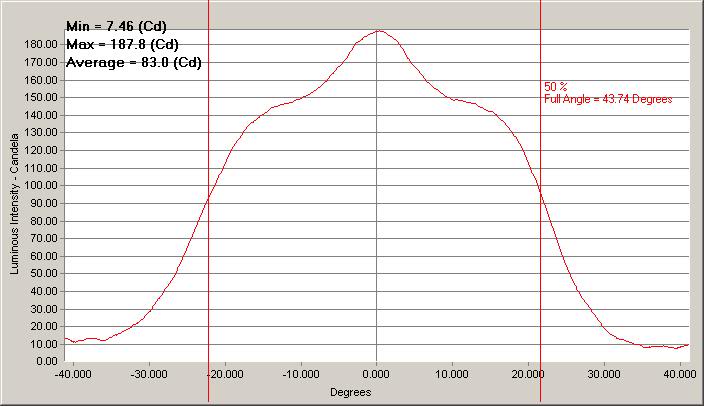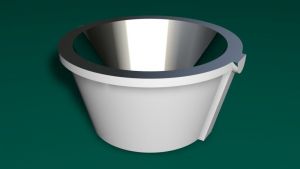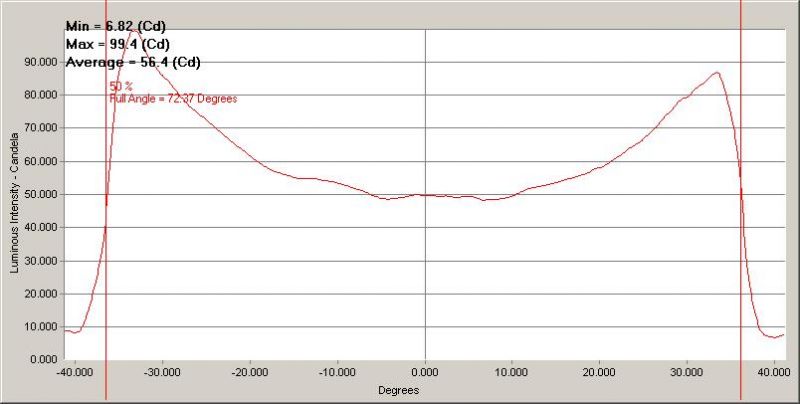Our eyes are not able to see hardly any of the light emitted by lower blue-violet wavelengths, so they do not add anything to the 'look' of the light. They have a great impact on fluorescence and emit a crazy amount of PAR. Put tight optics on them to get as much light into the tank as possible.
Navigation
Install the app
How to install the app on iOS
Follow along with the video below to see how to install our site as a web app on your home screen.
Note: This feature may not be available in some browsers.
More options
You are using an out of date browser. It may not display this or other websites correctly.
You should upgrade or use an alternative browser.
You should upgrade or use an alternative browser.
Color LEDs
- Thread starter Blue Tang
- Start date
- Tagged users None
- Joined
- Sep 23, 2006
- Messages
- 1,104
- Reaction score
- 156
. Put tight optics on them to get as much light into the tank as possible.
Elaborate please that doesn't seem right to me
Tight optics will reduce spread and if I (or others who just use a few of these HV for effect) were to use tight optics that light would not spread and only the corals directly beneath would get any benefit
I was going to use no optics ( which obviously is less efficient) but would not cause any spotlighting but would cast a small amount of light over a large area ie the whole tank
Using them this way may not have a big effect on par but I don't need more par - I'm looking for fluorescent effect
Elaborate please that doesn't seem right to me
Tight optics will reduce spread and if I (or others who just use a few of these HV for effect) were to use tight optics that light would not spread and only the corals directly beneath would get any benefit
I was going to use no optics ( which obviously is less efficient) but would not cause any spotlighting but would cast a small amount of light over a large area ie the whole tank
Using them this way may not have a big effect on par but I don't need more par - I'm looking for fluorescent effect
Tight optics will reduce the light spill on the glass.
I'll be doing some PAR Testing With and without the Carclo Ripple Wide tomorrow. Will post the results.
The right Bin of Cree XT-E Royal Blue when intense cause a wicked florescent effect in corals. This mixed with some 410-430nm will give you a great bang for the buck.
Bill
Elaborate please that doesn't seem right to me
Tight optics will reduce spread and if I (or others who just use a few of these HV for effect) were to use tight optics that light would not spread and only the corals directly beneath would get any benefit
I was going to use no optics ( which obviously is less efficient) but would not cause any spotlighting but would cast a small amount of light over a large area ie the whole tank
Using them this way may not have a big effect on par but I don't need more par - I'm looking for fluorescent effect
Par measured at 4" under a single 430nm hyper violet LED at 700ma was over 250. At 24", it was approximately 2. Optics are best for violets, and tight ones. If you have more than one on the tank, you'll get the coverage you need.
- Joined
- Sep 23, 2006
- Messages
- 1,104
- Reaction score
- 156
Tight optics will reduce the light spill on the glass.
I'll be doing some PAR Testing With and without the Carclo Ripple Wide tomorrow. Will post the results.
The right Bin of Cree XT-E Royal Blue when intense cause a wicked florescent effect in corals. This mixed with some 410-430nm will give you a great bang for the buck.
Bill
Hey bill you may not remember but I did my build through you - I am using optics on all my LEDs and have no light spill on the glass as tested by a par meter and the fact that I never have to scrape the glass
It's been almost three years (this July it will be ) and although I have had great results with the cool white royal blue array i got from you I have curious about the new LEDs out there and the trend toward a more full spectrum and was thinking about trying some HV 430nm LEDs just for fun.
I do think that people adding red or green are wasting electricity but the new violets may have something to offer..
Par measured at 4" under a single 430nm hyper violet LED at 700ma was over 250. At 24", it was approximately 2. Optics are best for violets, and tight ones. If you have more than one on the tank, you'll get the coverage you need.
Hmmm more to think about ...
Anyway bill I was planning on contacting you in the next week or so to get some new optics anyway - I would like to replace some (maybe all) of my old ones with the the carcio optics
If I do decide to add some HV, maybe i will need some optics for them as well, if your testing of the carcio wides prove merit.
Thanks guys
Hey bill you may not remember but I did my build through you - I am using optics on all my LEDs and have no light spill on the glass as tested by a par meter and the fact that I never have to scrape the glass
It's been almost three years (this July it will be ) and although I have had great results with the cool white royal blue array i got from you I have curious about the new LEDs out there and the trend toward a more full spectrum and was thinking about trying some HV 430nm LEDs just for fun.
I do think that people adding red or green are wasting electricity but the new violets may have something to offer..
Hmmm more to think about ...
Anyway bill I was planning on contacting you in the next week or so to get some new optics anyway - I would like to replace some (maybe all) of my old ones with the the carcio optics
If I do decide to add some HV, maybe i will need some optics for them as well, if your testing of the carcio wides prove merit.
Thanks guys
Wow I'm totally surprised on the results...I'll post more specifics on the test after I include a reflector.
Two fixtures same circuit board same drivers measured at 24" with a Quantum Flux Apogee PAR Meter uncorrected.
The one without Carclo Ripple Wide Optics measured a 100 PAR coverage of 34"x50" with a peak PAR in the middle of 155 PAR
The one with Carclo Ripple Wide Optics measured a 100 Par Coverage of 28"x42" with a Peak Par of 490 PAR!!!
The optics reduced usable spread by only 70% but increased Peak PAR by over 300%
Now I'm very curious as these results mimic my tests of one of our Sponsors Chinese Imports, one with Chinese Optics and the other without (early version they no longer offer
Next I'll test reflectors I'm ordering today.


Carclo Data on their 10209 Ripple Wide


Carclo data on the 10170 Wide Reflector
Should be an interesting comparison
Bill
- Joined
- Sep 23, 2006
- Messages
- 1,104
- Reaction score
- 156
Hey bill if I do change out my old optic for the ripple wides - I need to get the glue down holders too right?
Carclo Optics Holder 10736 (Glue Down) | Reef LED LightsReef LED Lights
And this is the model you recommend
Carclo 10209 XP/T Ripple Wide Optics | Reef LED LightsReef LED Lights
I'm replacing 60* Cree optics
Carclo Optics Holder 10736 (Glue Down) | Reef LED LightsReef LED Lights
And this is the model you recommend
Carclo 10209 XP/T Ripple Wide Optics | Reef LED LightsReef LED Lights
I'm replacing 60* Cree optics
Hey bill if I do change out my old optic for the ripple wides - I need to get the glue down holders too right?
Carclo Optics Holder 10736 (Glue Down) | Reef LED LightsReef LED Lights
And this is the model you recommend
Carclo 10209 XP/T Ripple Wide Optics | Reef LED LightsReef LED Lights
I'm replacing 60* Cree optics
Yes you will need the holders. Compared to the Cree 60 Degree you will see a decent improvement in penetration.
Bill
Similar threads
- Replies
- 9
- Views
- 295
- Replies
- 1
- Views
- 59














